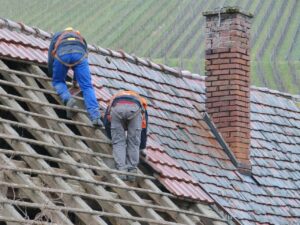How To Address Roof Sagging And Structural Issues
Are you concerned about your roof sagging and the potential structural issues it may cause? Don't worry, we've got you covered!
In this article, we will guide you through the process of addressing roof sagging and ensuring the structural integrity of your home.
Firstly, we will help you identify common causes of roof sagging, such as excessive weight, poor construction, or water damage. By recognizing these factors, you can take appropriate measures to rectify the situation.
Next, we will discuss the signs and symptoms of structural issues, such as cracked walls, uneven floors, or doors that don't close properly. These indicators will assist you in determining the severity of the problem and taking necessary action.
Once you have assessed the issue, we will provide effective techniques for fixing roof sagging. From reinforcing the existing structure to installing support beams, we'll cover all the steps needed to restore your roof's stability.
Lastly, we will share preventative measures to maintain the structural integrity of your roof, helping you avoid future problems. By following our advice, you can ensure the safety and longevity of your home.
Don't let roof sagging and structural issues give you sleepless nights. Read on to learn how to address these concerns and protect your home.
Identifying Common Causes of Roof Sagging
Now, let's dive into some of the most common reasons why your roof might be sagging and what you can do about it.
One common cause of roof sagging is the weight of accumulated snow or ice during winter. This excess weight puts pressure on the roof structure, causing it to sag over time.
Another common reason is poor construction or design, where the roof wasn't built to withstand the weight and stress it's currently experiencing.
Additionally, water damage due to leaks or inadequate drainage can weaken the roof structure and lead to sagging.
Finally, age and wear and tear can also contribute to roof sagging. It's important to identify the underlying cause of the sagging to properly address the structural issues and prevent further damage.
Signs and Symptoms of Structural Issues
First, let's take a look at what you might notice if there are any problems with the structure of your roof. One of the most common signs is sagging or dipping in the roofline. This can be seen from both the inside and outside of your home.
Inside, you might notice cracks in the walls or ceilings, or doors and windows that don't close properly.
Outside, you may see visible signs of stress, such as bowed or warped rafters, or even sections of the roof that appear to be sinking.
Another symptom of structural issues is a noticeable slope or unevenness in the roof surface.
If you observe any of these signs, it's crucial to address the problem promptly to prevent further damage and ensure the safety of your home.
Steps to Assess and Evaluate the Severity of the Problem
One of the most critical steps in determining the severity of the problem is to carefully assess and evaluate the signs and symptoms you observe.
Start by visually inspecting the roof for any noticeable sagging or dipping. Look out for cracks in the ceiling or walls, as well as doors or windows that are difficult to open or close. Use a level to check if the roof is uneven or sloping.
Additionally, check the attic for any signs of water damage, such as stains or mold. It's also important to look for any structural issues in the foundation or walls of the house.
If you notice any major problems, it's recommended to consult a professional structural engineer who can provide a detailed evaluation and recommend appropriate solutions.
Effective Techniques for Fixing Roof Sagging
To effectively remedy a drooping roof, you'll need to employ proven techniques that can restore stability and enhance the overall structural integrity of your home.
One effective technique is to install support beams or trusses that can help redistribute the weight and provide additional support to the sagging areas.
Another option is to use hydraulic jacks to gradually lift the roof back into its proper position. This should be done carefully and under the supervision of a professional to avoid causing further damage.
Reinforcing the roof with additional framing or bracing can also help prevent future sagging.
Additionally, repairing or replacing any damaged or deteriorated components, such as rafters or joists, is crucial to ensure a long-lasting fix.
Remember to consult with a qualified contractor or structural engineer to determine the best approach for your specific situation.
Preventative Measures to Maintain Structural Integrity
Ensuring the long-term stability of your home involves taking proactive steps to maintain its structural integrity. By implementing preventative measures, you can prevent roof sagging and other structural issues from occurring in the first place.
Regularly inspect your roof for any signs of damage, such as cracked or missing shingles, and promptly address them. Keep your gutters clean and free of debris to prevent water from pooling on your roof and causing structural damage.
Additionally, make sure your attic is properly ventilated to prevent excessive moisture buildup, which can weaken the roof structure. Finally, consider reinforcing your roof trusses or rafters with additional support beams if you live in an area prone to heavy snow or high winds.

Taking these preventative measures will help ensure the long-term stability of your home and avoid costly repairs in the future.
Conclusion
In conclusion, addressing roof sagging and structural issues is crucial for the safety and longevity of your home. By identifying common causes and recognizing signs of damage, you can take the necessary steps to assess and evaluate the severity of the problem.
Effective techniques for fixing roof sagging can then be implemented, ensuring a stable and secure structure. Additionally, practicing preventative measures will help maintain the structural integrity of your roof, preventing future issues.
Remember, addressing these concerns promptly is key to avoiding further damage and costly repairs.

